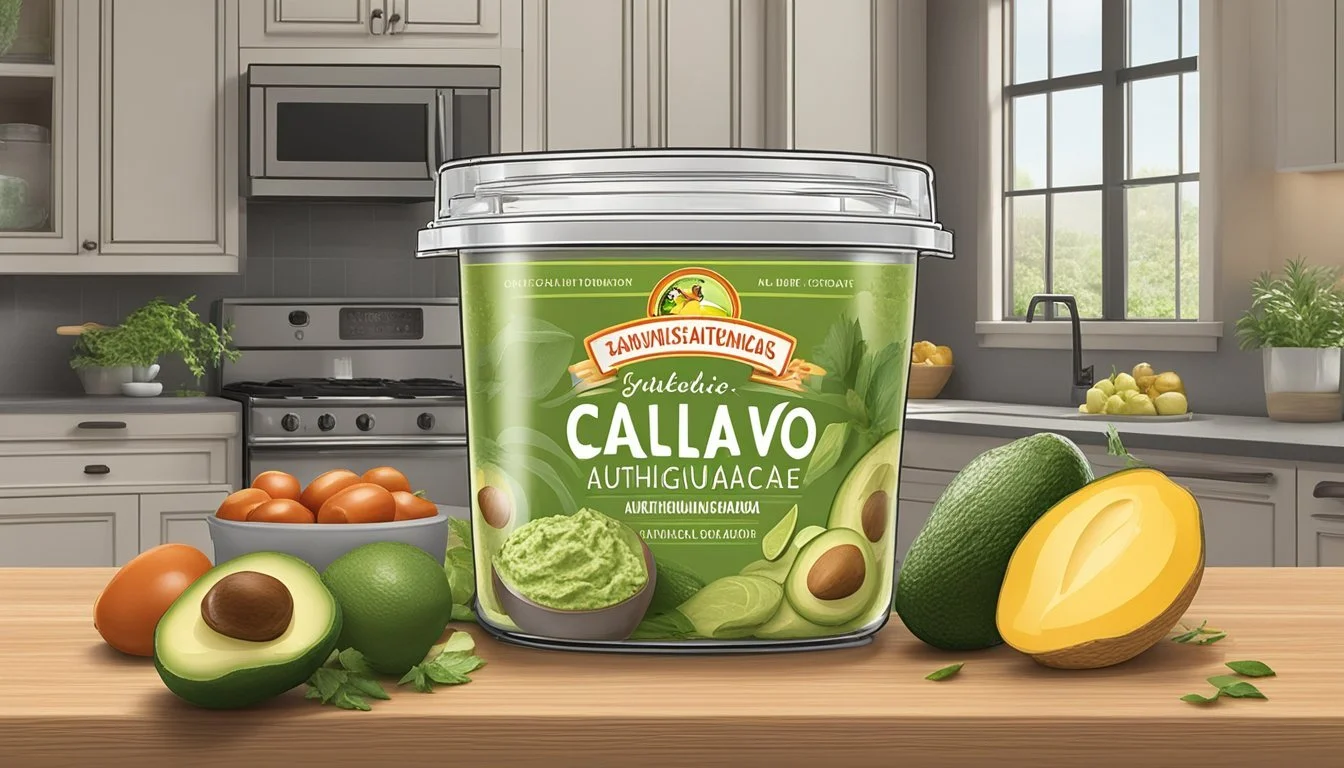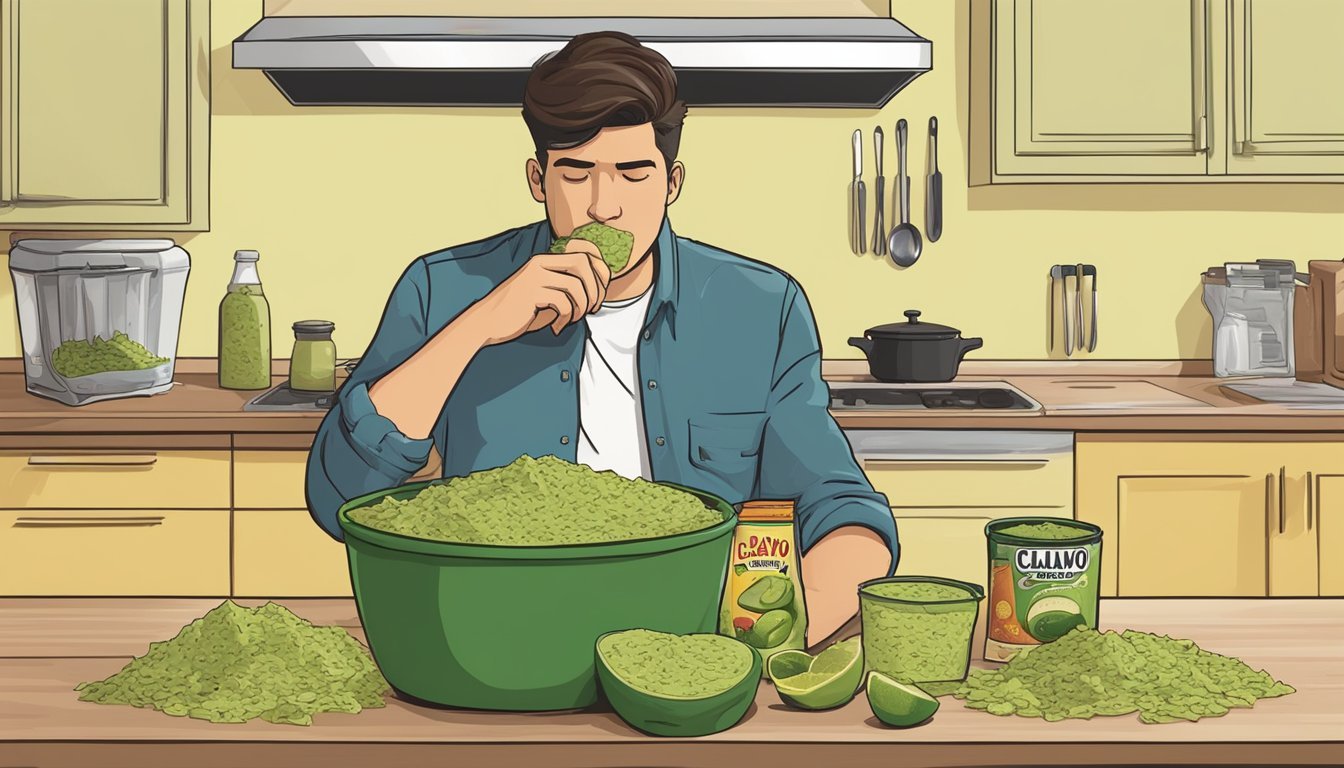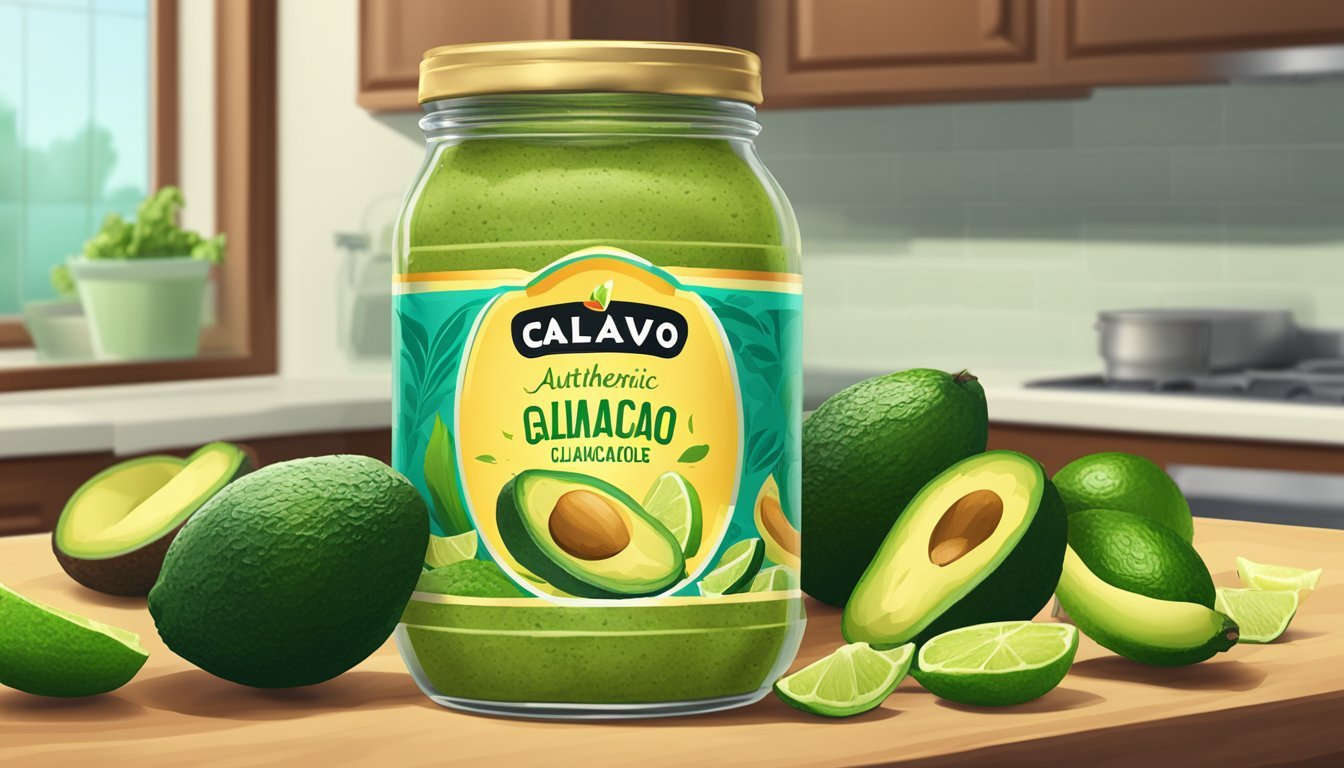How Long Does Calavo Authentic Guacamole Last?
Unveiling Shelf Life Facts
Calavo Authentic Guacamole, a popular store-bought option for avocado enthusiasts, offers a convenient alternative to homemade guacamole. Its shelf life is a point of interest for consumers looking to enjoy its fresh taste over time. It is generally understood that Calavo Authentic Guacamole can be expected to last for a varying period depending on various factors, including whether it is opened or unopened and how it is stored.
When unopened and refrigerated, Calavo Authentic Guacamole typically maintains its quality for at least seven to ten days, and often up to two weeks, provided it is stored correctly in the fridge. The presence of preservatives in the product helps to extend its shelf life compared to homemade guacamole, which lacks these additives. Once the product is opened, however, its longevity decreases, and it should be consumed within three to four days to ensure quality and food safety.
For those looking to maximize the shelf life of their Calavo guacamole, proper storage is crucial. Keeping the guacamole in an airtight container and minimizing its exposure to air can help to prevent oxidation, which leads to browning and spoilage. Additionally, consumers are advised to heed the use-by date marked on the packaging, although with proper refrigeration, the product can sometimes be enjoyed a little beyond this date without compromising its safety or taste.
Understanding Guacamole
In the realm of dips and spreads, guacamole stands out for its rich history, nutritional value, and variety of recipes that customize its flavor and texture.
Ingredients and Their Impact
Guacamole's primary ingredient is mashed avocados, revered for their creamy texture and health benefits, including high fiber content and potassium. Traditional recipes also incorporate onions, tomatoes, and lime juice, each contributing to the dip's signature taste. The onions add a sharp, astringent quality, while tomatoes provide a juicy, subtly sweet contrast. Lime juice not only lends a tangy zest but also acts as a preservative, reducing oxidation and helping retain the guacamole's vibrant green color.
History of Guacamole
Guacamole has its roots in the Aztec civilization, serving as a testament to the dish's enduring legacy. As a spread and a condiment, it has evolved from its history as a simple salad of mashed avocados to become an international sensation. The dish found inspiration in the Aztecs' love for avocados and has since been adapted and adopted by various cultures around the globe.
Different Types of Guacamole
Guacamole can be found in several forms, each varying slightly in ingredients and preparation methods. Homemade guacamole often features fresh ingredients and can be customized to personal tastes. On the other hand, store-bought varieties aim for longer shelf life and might include preservatives. Through various recipes, guacamole can be tweaked to serve as a smooth condiment, a chunky spread, or even a standalone salad, making it a versatile addition to any culinary repertoire.
Shelf Life of Guacamole
Guacamole's shelf life varies based on whether it is store-bought or homemade and whether the package has been opened or not. Proper storage is crucial to maximize its freshness.
Unopened Store-Bought Guacamole
When still sealed, Calavo Authentic Guacamole typically remains good for 1-2 weeks past the 'best by' date when refrigerated. Consumers can rely on the date printed on the packaging to gauge its freshness, but it's common for the guacamole to remain edible beyond this period if kept at a consistent and cool temperature in the fridge.
Opened Store-Bought Guacamole
Once opened, the lifespan of Calavo Guacamole shortens significantly. It should be consumed within 1-2 days for optimal taste and safety. To maintain freshness, it's essential to keep the guacamole tightly sealed and refrigerated right after using it.
Homemade Guacamole
Homemade guacamole generally has a shorter shelf life due to the absence of preservatives. It can last for about 2-3 days in the refrigerator. It's critical to store it in an air-tight container and press a layer of plastic wrap directly onto the surface to minimize oxidation and browning.
Proper Storage Techniques
To ensure optimal freshness and extend shelf life, consumers must follow specific storage procedures for Calavo Authentic Guacamole.
Storing Guacamole in the Fridge
Storing Calavo Authentic Guacamole in the fridge after opening is essential to maintain its freshness. It should be kept in an airtight container to prevent exposure to air, which can cause browning and spoilage. If the original packaging is not resealable, transferring the guacamole to a container with a tight-fitting lid is recommended. For added protection, pressing plastic wrap directly onto the surface of the guacamole before sealing the container can help minimize air contact. The fridge should be set at a temperature between 35-40°F (2-4°C), as this range slows down bacterial growth and preserves the guacamole's quality.
Freezing Guacamole
Freezing Calavo Authentic Guacamole is an effective way to extend its shelf life. When freezing, it's best to use small portions to make it more convenient to thaw only the amount needed at a time. The guacamole should be stored in an airtight container or a heavy-duty freezer bag to prevent freezer burn. Although some texture changes might occur due to the freezing process, especially in guacamoles without preservatives, the flavor should remain intact. Labeling the container with the freezing date can help keep track of how long it has been stored. Properly frozen guacamole can be expected to last for up to four months in the freezer.
Preventing Spoilage and Oxidation
To extend the freshness of Calavo Authentic Guacamole, it is essential to employ strategies that specifically target spoilage and oxidation, the primary causes of quality degradation in guacamole.
Protecting Guacamole from Air Exposure
Oxidation occurs when the guacamole is exposed to air, leading to an unappetizing brown layer on the surface. Spoilage can also occur more rapidly with increased oxygen contact. To minimize air exposure:
Store in an airtight container: Ensure that the container seals effectively to prevent air from entering.
Press plastic wrap directly on the surface: If a container is not fully airtight, covering the guacamole's surface with plastic wrap can act as an additional barrier to air.
Using Lime Juice and Avocado Pit
Lime juice contains citric acid which slows down oxidation, thereby preserving the guacamole's vibrant green color. An avocado pit can also be placed in the center of the guacamole to reduce browning. Here’s how one can use these methods:
Lime Juice:
Squeeze fresh lime juice evenly over the surface of the guacamole before sealing the container. This adds a protective layer against oxidation.
Avocado Pit:
Place the pit from one of the used avocados into the center of the guacamole dish to help keep it green longer. Although not fully proven, many believe that the pit can help to prevent oxidation.
By following these methods, the potential for spoilage and oxidation of Calavo Authentic Guacamole is significantly reduced.
Recognizing Spoiled Guacamole
When Calavo authentic guacamole begins to spoil, certain characteristics become apparent. It's important for consumers to identify these signs promptly to avoid the potential risks associated with consuming spoiled food.
Visual Changes
Calavo authentic guacamole should be a vibrant green color when fresh. The onset of spoilage is often marked by:
Color: A transition to a brown or grayish hue is a clear indication that the guacamole is going bad.
Texture: Look for any separation of liquids or mold growth on the surface, which signals spoilage.
Smell and Taste
The senses of smell and taste are crucial in identifying bad guacamole:
Smell: A fresh, earthy aroma is typical of good guacamole. A sour or off smell indicates spoilage.
Taste: If there's any doubt after visual inspection, a small taste can confirm. A bitter or unpleasant taste means the guacamole should not be consumed.
Health Considerations
When considering the consumption of Calavo Authentic Guacamole, it is crucial to remember that food safety is paramount. Improper storage and handling could lead to health risks, including foodborne illnesses.
Food Poisoning Risks
Calavo Authentic Guacamole, like any perishable food product, is subject to the potential growth of bacteria that might result in food poisoning. Consumption of guacamole that has been contaminated can cause symptoms such as stomach cramps, nausea, vomiting, and diarrhea. Here are some key points to consider:
Expiration: Always heed the use-by or best-by date.
Storage: Refrigeration is necessary, as it inhibits bacterial growth.
Timeframe: Post opening, consume the guacamole within 3-5 days to minimize risk.
Color Change: Discard the product if it shows significant brown or gray discoloration, signs of potential spoilage.
Importance of Hygiene
Maintaining proper hygiene during the handling of Calavo Authentic Guacamole is another crucial step in preventing foodborne illness. Below are important hygiene practices:
Utensils: Use clean utensils to avoid cross-contamination.
Hands: Wash hands thoroughly with soap and water prior to handling guacamole.
Containers: If transferring from the original container, ensure that the new one is clean and airtight.
Ensuring these health considerations are met will significantly reduce the risk of food poisoning and maintain the enjoyable experience that Calavo Authentic Guacamole is known for.
Consumer Insights
When shoppers and foodservice professionals are selecting packaged guacamole like Calavo's Authentic Guacamole, there are specific quality indicators and usage considerations that guide their choices.
Shopping for Quality Guacamole
Consumers expect a high-quality guacamole to exhibit a rich, creamy texture with a flavor profile that closely mirrors that of fresh-made guacamole. For the shopper seeking authenticity, especially within the Hispanic market, the taste should be a balance of ripe avocados, onions, tomatoes, and the right amount of seasoning. They often look for indications of quality on the packaging, such as the use of real avocados, minimal preservatives, and positive reviews from food experts or on credible consumer forums. A clear indication of the use-by date is critical, as it ensures freshness upon purchase.
Ingredients: They should be simple and recognizable.
Packaging: Clear labeling of expiration dates.
Expert Endorsements: Adds credibility to quality claims.
Consumer Reviews: Acts as a testament to the product’s authenticity.
Usage in Foodservice
Foodservice establishments, ranging from small cafes to large institutions, prioritize consistency and shelf life when purchasing guacamole in bulk. They require a product that maintains a fresh flavor and texture over time, even after the package has been opened. Calavo’s guacamole is often sought after for its extended shelf life due to preservation techniques that do not compromise the quality and flavor profile desired in foodservice applications.
Consistency: Ensures the same taste and texture with every batch.
Shelf Life: Longer shelf life contributes to reduced waste and cost savings.
Ease of Use: Ready-to-serve packaging is a plus for fast-paced environments.
Versatility: Guacamole that pairs well with a variety of dishes is valuable in foodservice.







